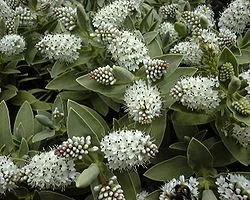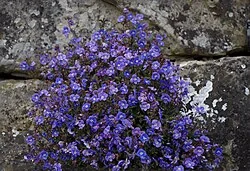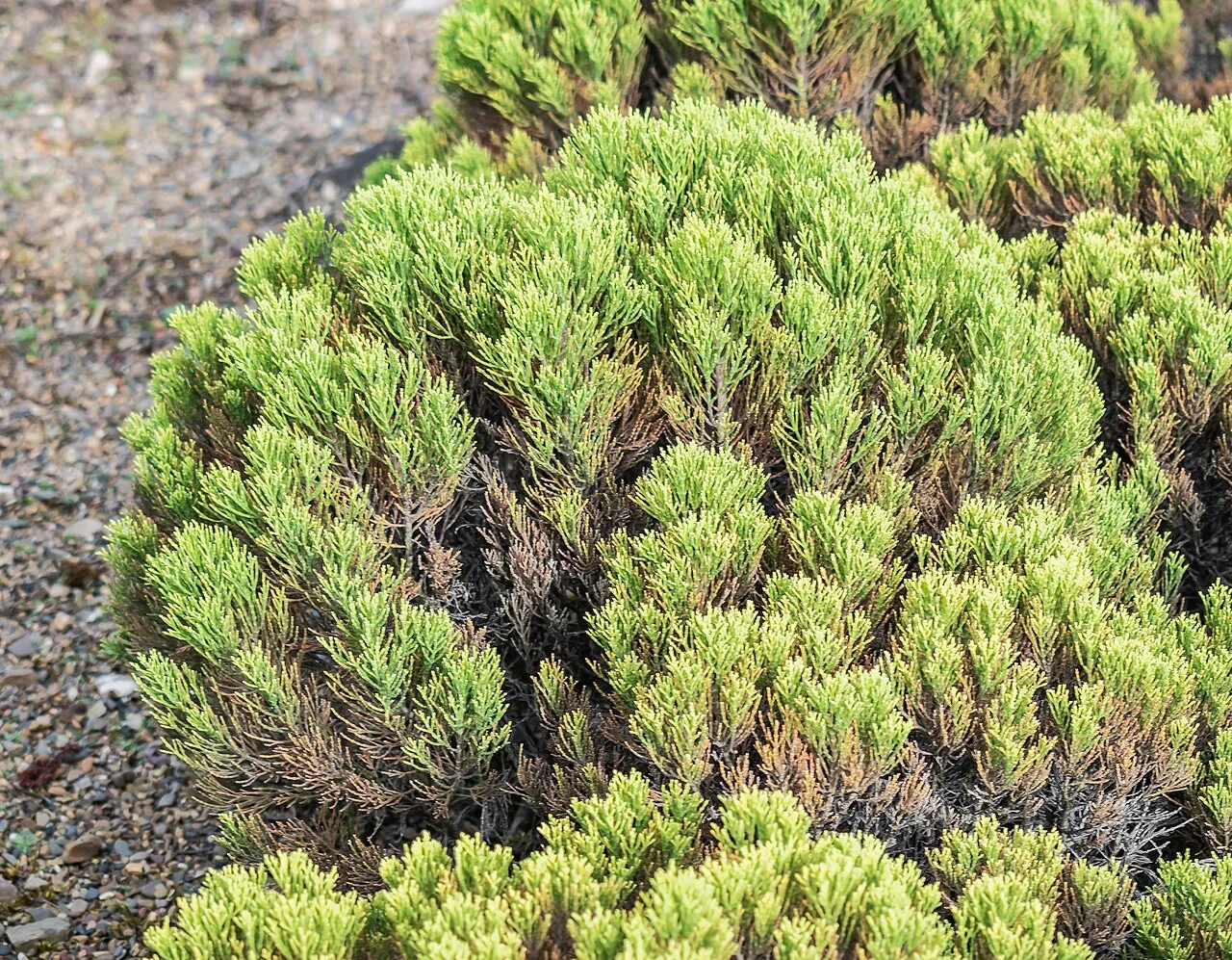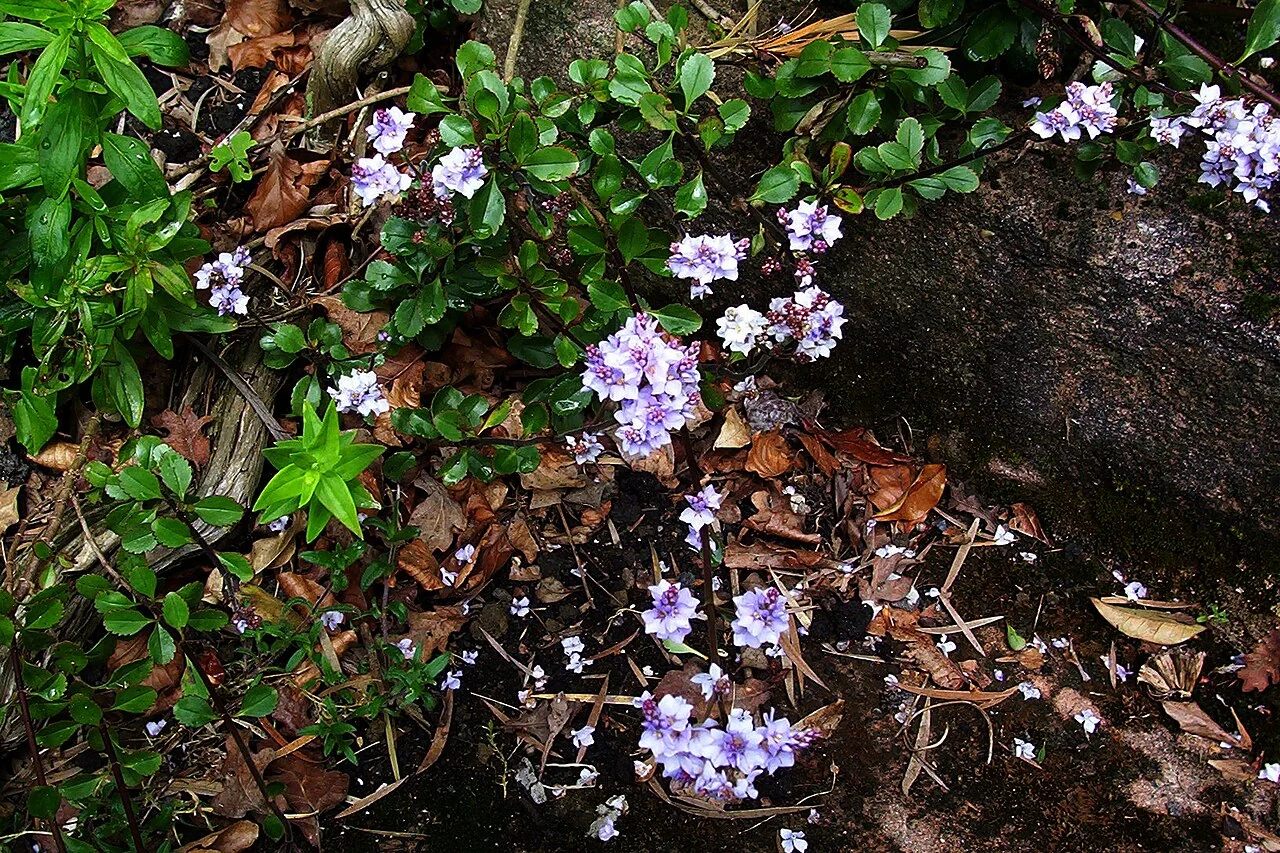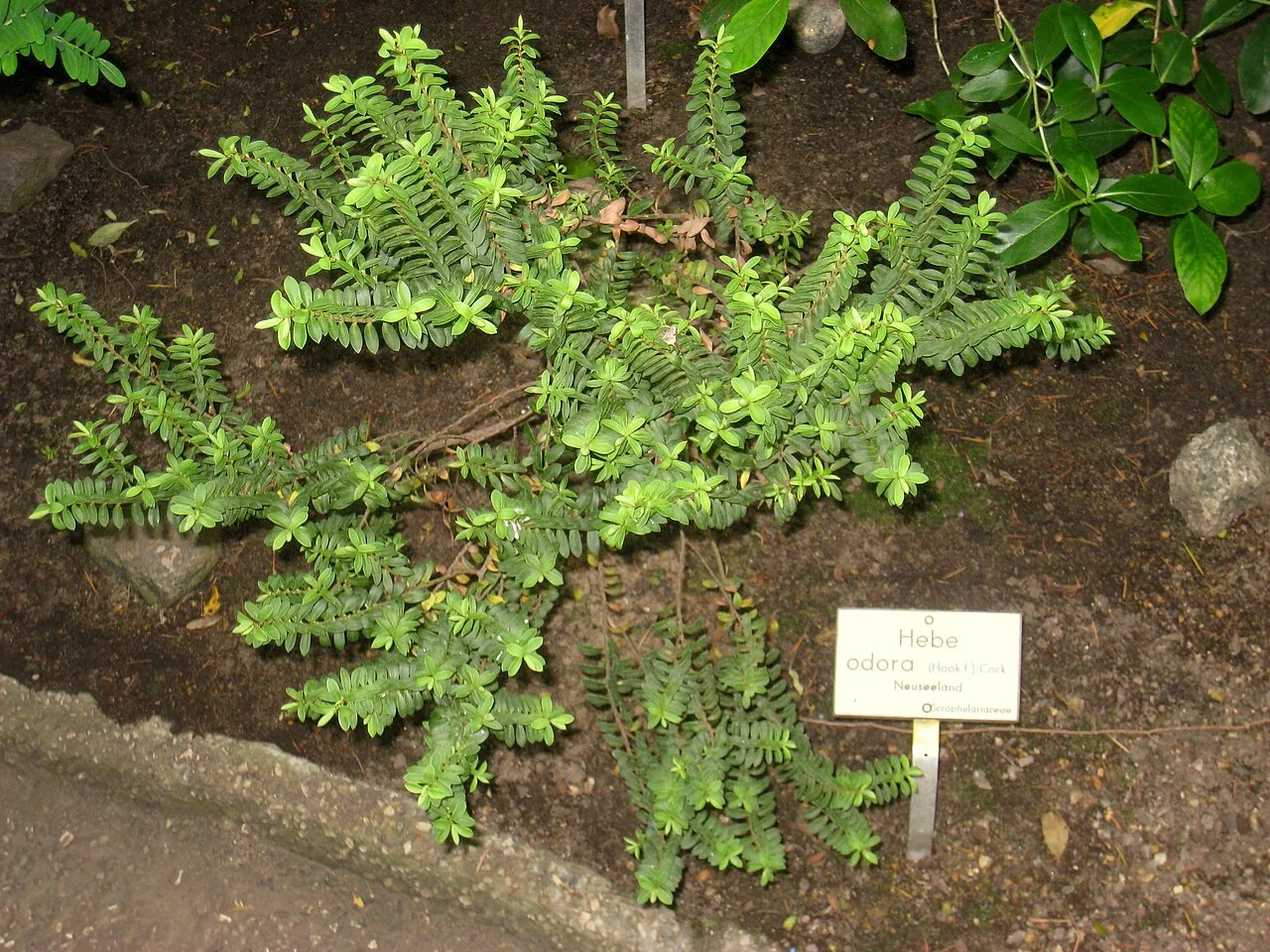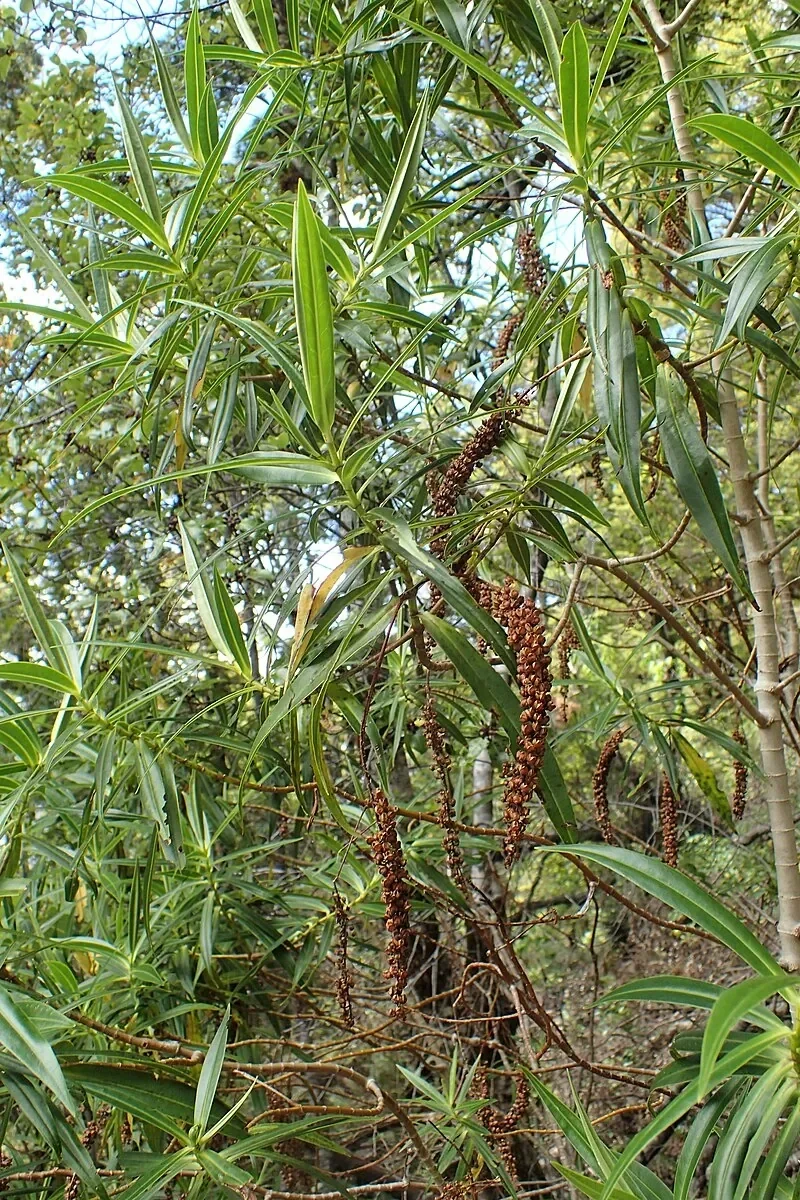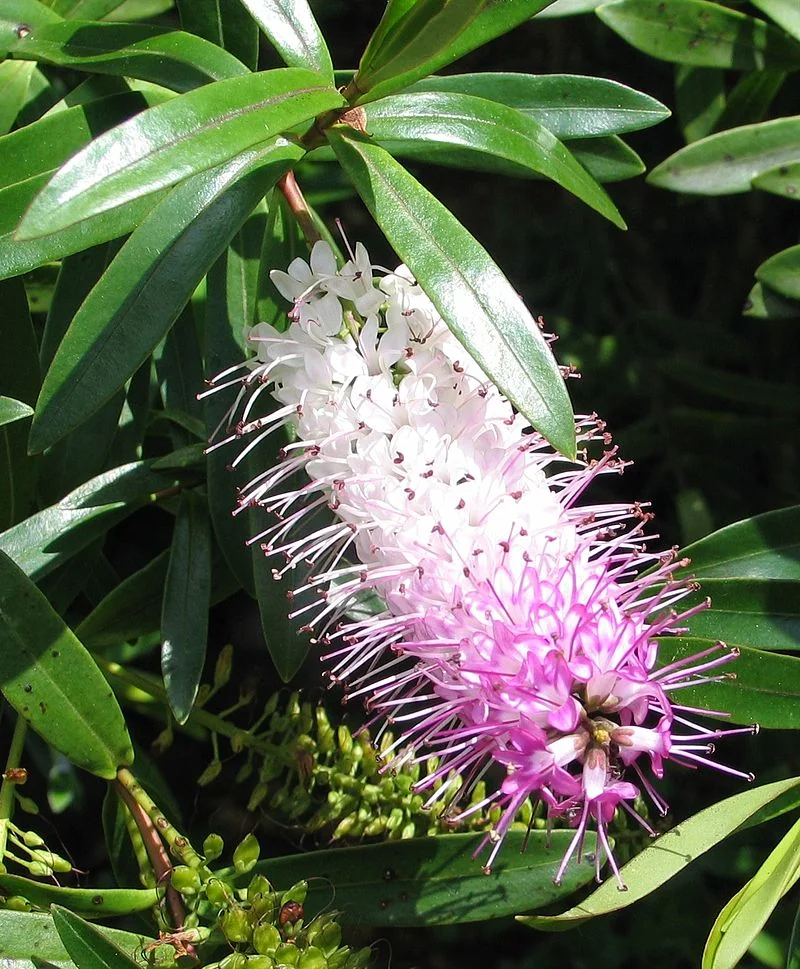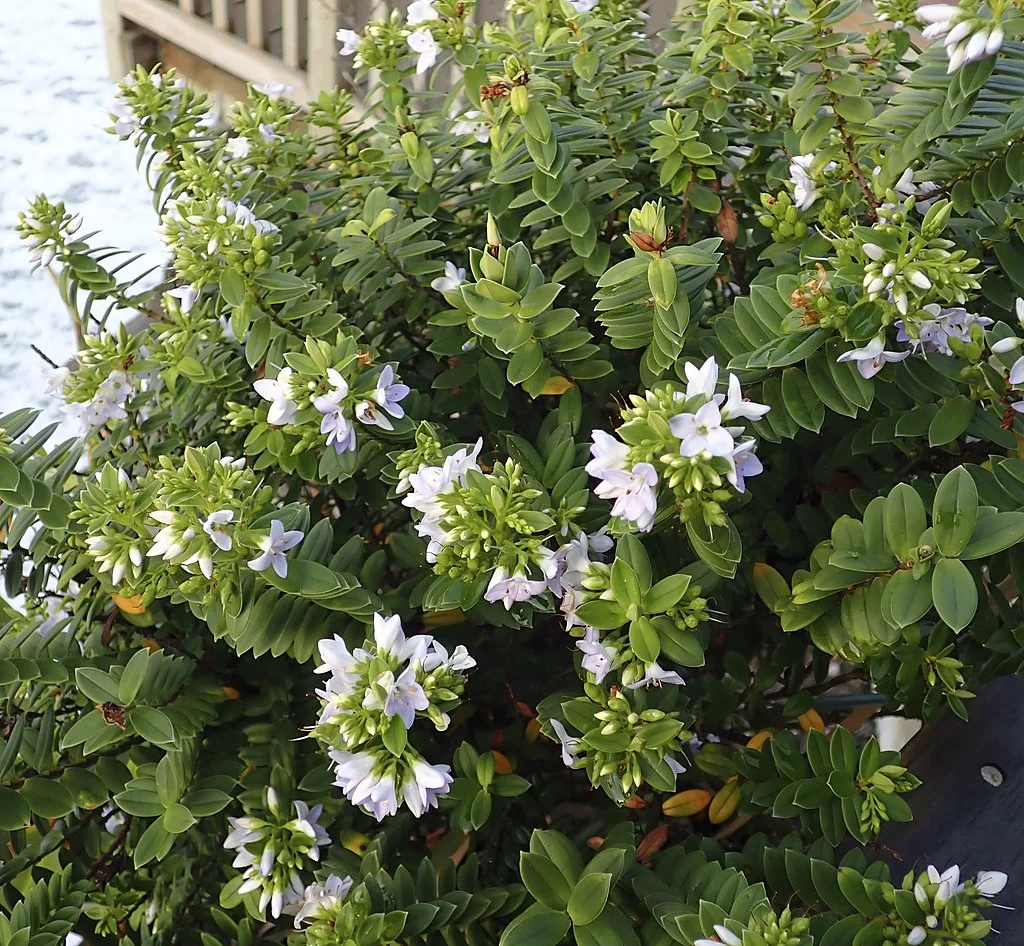
Coastal Hebe
Veronica elliptica
Introduction
Coastal Hebe (scientific name: Veronica elliptica ) is a robust native shrub renowned for its exceptional tolerance to coastal conditions, salt spray, and strong winds. This hardy evergreen produces dense clusters of small white or pale blue flowers and glossy oval leaves, making it an excellent choice for seaside gardens and challenging sites. Found naturally along New Zealand's coastlines, it's prized for its year-round appeal and low maintenance requirements. Explore more in the native plants index .

Plant Description
Botanical Features
Coastal Hebe ( Veronica elliptica ), also known by its synonym Hebe elliptica , is a plant belonging to the family Plantaginaceae. It is native to New Zealand (including the Antipodean and Chatham Islands), Patagonia, and the Falkland Islands. This species is an evergreen, bushy shrub or small tree that can grow to 1 meter or more in height, and up to 2 meters tall. Its leaves are green, oval, and typically 2-4 cm long. They are described as dark green, glossy, and have a narrow white-hairy margin. The leaves are coriaceous (leathery) and can be broadly to narrowly elliptic, oblong, obovate, or oblanceolate, ranging from 12-31 mm long by 6-12 mm wide. The leaf margins are conspicuously pubescent (hairy) except at the petioles and plicate-mucronate apices. The flowers are white to pale mauve or purplish, appearing in spikes up to 5 cm long. The flowers are considered among the largest in the genus, sometimes reaching 2/3 inch in diameter, and are often fragrant. Its branches are erect, with old stems that are brown. Branchlets can be green, red-brown, or reddish-black and are pubescent.
Quick Facts
Essential Information
| Scientific Name | Veronica Elliptica |
|---|---|
| Height | 1 - 2 m |
| Spread | 1 - 2 m |
| Water Needs | Low to moderate; drought-tolerant once established |
| Light | Full sun to partial shade |
| Frost Tolerance | High |
| Salt Tolerance | Very high |
| Growth Rate | Moderate |
| Lifespan | Long-lived shrub |
Climate Best Suited to
As its name suggests, Coastal Hebe is perfectly adapted to maritime environments. It thrives in coastal gardens around New Zealand, tolerating salt spray and wind with ease. It is hardy to frost and adaptable to a wide range of climates, from the top of the North Island to the subantarctic islands.
Regional Suitability
| Whangārei | Ideal |
| Auckland | Ideal |
| Hamilton | Suitable |
| Rotorua | Suitable |
| Tauranga | Ideal |
| Gisborne | Ideal |
| New Plymouth | Ideal |
| Whanganui | Ideal |
| Palmerston North | Suitable |
| Napier | Ideal |
| Wellington | Ideal |
| Nelson | Ideal |
| Christchurch | Suitable |
| Dunedin | Suitable |
| Invercargill | Suitable |
| City | Climate Suitability |
|---|
Natural Habitat
Coastal Hebe ( Veronica elliptica ), also known by its synonym Hebe elliptica , is a species of flowering plant native to New Zealand (including the Antipodean and Chatham Islands), Patagonia, and the Falkland Islands. It is commonly found in coastal areas, frequently on rocks and cliffs, and occasionally within coastal shrub communities.
Key Habitats Include:
- Coastal Environments: It thrives in exposed coastal environments, typically growing on rocks, cliffs, and within coastal shrub communities at elevations from 0 to 45 meters.
- Temperate Oceanic Climates: This species is well-adapted to temperate oceanic climates, tolerating salt spray and strong winds.
Preferred Conditions:
- Soil: It thrives in well-draining soil and tolerates poor soils. Good drainage is important for healthy root development.
- Light: It performs best in full sun to partial shade.
Distribution:
- Widespread Coastal Distribution: Its widespread distribution across New Zealand's coastlines, as well as in Patagonia and the Falkland Islands, highlights its remarkable adaptability to maritime conditions.
- Naturalized Populations: It has naturalized in areas like Tasmania, Australia, and north-west France, further demonstrating its resilience.
The presence of Veronica elliptica in these diverse coastal habitats underscores its ecological importance in contributing to the biodiversity and structural complexity of New Zealand's natural coastal landscapes.
Plant Conservation
Veronica elliptica , also known as k k muka, shore hebe, or shore koromiko, is a plant species native to New Zealand, the Falkland Islands, and southern Chile to Patagonian Argentina. In terms of conservation, Veronica elliptica is currently classified as "Not Threatened" in New Zealand. This status has been consistent in assessments from 2004, 2009, 2012, and 2017 under the New Zealand Threat Classification System (NZTCS). This bushy shrub or small tree thrives in coastal environments, often found in exposed, rocky areas, and is tolerant of salt spray.
Growing Requirements
Soil Requirements
Coastal Hebe ( Veronica elliptica ) thrives in well-draining soil, tolerates poor soils. Understanding its natural habitat in coastal areas and cliff faces helps guide successful cultivation.
- Natural habitat: coastal areas and cliff faces
- Soil preference: well-draining soil, tolerates poor soils
- Good drainage important for healthy root development
- Benefits from organic matter incorporation where appropriate
- Avoid conditions that differ significantly from natural habitat
Light Requirements
Coastal Hebe ( Veronica elliptica ) performs best in full sun to partial shade. This reflects its natural growing conditions and ensures optimal growth and health.
- Preferred light conditions: full sun to partial shade
- Plant in position that mimics natural habitat
- Consider seasonal light changes in garden placement
- Protect from extreme conditions if necessary
Water Requirements
Coastal Hebe ( Veronica elliptica ) has low to moderate, drought and salt tolerant. Understanding these needs ensures successful establishment and long-term health.
- Water requirements: low to moderate, drought and salt tolerant
- Regular watering important during establishment
- Adjust watering to match natural habitat conditions
- Monitor for signs of water stress
- Mulching can help maintain appropriate soil moisture
Planting Guide
Veronica elliptica , also known as k k muka, shore hebe, or shore koromiko, is a bushy, evergreen shrub or small tree native to coastal areas, particularly in New Zealand. It's known for its dark green, glossy, oval leaves and white or purplish flowers that appear in spikes.
1. When to Plant:
The most effective times to plant Veronica elliptica are in autumn or spring, as this allows the plants to establish better. However, they can be planted at any time of the year. If planting from seed, sow directly into the garden after the risk of frost has passed, or start seeds indoors 4-6 weeks before the last frost.
2. Where to Plant:
- Light: Veronica elliptica thrives in full sun or partial shade. Full sun generally leads to better flower production, and without it, plants may be more susceptible to foliar diseases like powdery mildew and leaf spot.
- Soil: This plant prefers well-drained soil. Loamy soil with plenty of organic matter is ideal, and it can tolerate slightly acidic, neutral, and slightly alkaline pH levels (between 6.0 and 8.0). It will not thrive in heavy clay or waterlogged soil.
- Location: Veronica elliptica is an excellent coastal shrub and does well in most gardens. It's suitable for city and courtyard gardens, gravel gardens, cottage and informal gardens, wildlife gardens, low-maintenance areas, and flower borders and beds. Smaller varieties can also be grown in containers.
3. How to Plant:
- Nursery Transplants: Dig a hole twice the diameter of the container. Place the plant so the top of the root ball is even with the soil level. Press down on the soil to remove air pockets and water well.
- Loose-rooted Plants: Soak the roots in water for 1-2 hours before planting. Dig a hole large enough for the root system. Ensure the crown is just below the soil, leaving any leaves exposed. Water well once planted.
- Spacing: Space plants approximately 30-60 cm (1-2 feet) apart, depending on the variety's size. Some sources suggest 10-20 inches depending on the variety.
- Containers: Choose a large container (30-40 cm in diameter) with good drainage. Use a peat-free multipurpose potting compost or a loam-based compost mixed with coarse grit or perlite for improved drainage. Position the plant at the same level as it was in its original pot.
4. Care Tips:
- Watering: Water newly planted Veronica elliptica regularly during its first summer. Once established, it tolerates drought and needs little supplemental watering, though it appreciates water during exceptionally dry periods, especially during peak bloom. Plants in containers will need more frequent watering.
- Fertilizing: Veronica elliptica is not a heavy feeder. If planted in fertile soil, it doesn't require regular fertilizer. If the soil is poor, fertilize once in the spring with a balanced, all-purpose fertilizer. Adding fresh compost to the planting site before planting is also beneficial.
- Pruning: Light trimming can be done at any time, but it's best undertaken in summer. For upright types, deadhead spent flowers just below the spike to encourage rebloom.
- Pests and Diseases: May be susceptible to aphids, whiteflies, downy mildews, fungal leaf spot, fungal rot, and Phytophthora . Good air circulation can help prevent foliar diseases. It is also a high-risk host for Xylella fastidiosa .
- Overwintering: Most Hebes are hardy, but some may need a sheltered position over winter. Plants in containers are more susceptible to cold and may need to be moved to a sheltered spot or protected from excessive rain.
5. Propagation:
Veronica elliptica can be propagated by seed or by semi-hardwood cuttings. Division is also a common and easy method, especially for herbaceous perennial types, and can help reinvigorate mature plants.
Ecological Role
Coastal Biodiversity
Shore koromiko ( Veronica elliptica ) is a hardy coastal shrub that provides nectar for native insects and structural shelter for lizards and invertebrates in exposed shore habitats. Its compact form helps knit dunes and rocky banks with other salt-tolerant natives.
Uses and Significance
Garden and Landscaping Uses
- Coastal Gardens: An essential plant for any coastal garden due to its high tolerance for salt and wind.
- Hedging: Its dense growth habit makes it an excellent choice for a formal or informal hedge.
- Mixed Borders: Provides structure and year-round interest in mixed shrub borders.
- Attracting Pollinators: The flowers are a magnet for bees and other native insects.
Cultural Significance
Traditional Uses and Values
Veronica elliptica , also known by its Māori names k k muka, shore hebe, or shore koromiko, holds cultural significance, particularly in the context of New Zealand. One notable instance of its cultural importance stems from a survival story: the branches of Veronica elliptica were utilized by the survivors of the Dundonald shipwreck on Disappointment Island, Auckland Islands, New Zealand. They fashioned these branches into a coracle and oars, which enabled them to successfully reach Auckland Island. While specific traditional medicinal uses for Veronica elliptica are not detailed, the broader Veronica genus, to which it belongs, has a history of traditional use in medicine. Various Veronica species have been employed for wound healing, treating rheumatism, and addressing other ailments in traditional medicine systems, including Turkish folk medicine. These plants are recognized for properties such as being diuretic, antiscorbutic, and possessing antioxidant, antimicrobial, and anti-inflammatory activities.
Landscaping Ideas
Coastal Hedges and Groundcover
Shore koromiko is ideal for low, salt-tolerant hedges and bank binding near the coast. Combine with Coprosma repens and Apodasmia similis for layered dune-edge plantings.
Seasonal Care Calendar
Spring
Spring is an active growth period for Coastal Hebe ( Veronica elliptica ). New growth emerges and this is an ideal time for planting new specimens. Monitor soil moisture as temperatures warm and growth accelerates.
- Active growth period with new development
- Ideal time for planting new specimens
- Monitor soil moisture as growth increases
- Apply organic mulch if needed
Summer
Summer is typically the main growing season for Coastal Hebe ( Veronica elliptica ). Spring to summer flowering occurs during this period. Ensure adequate watering during hot, dry periods according to the plant's specific needs.
- Peak growing season with active development
- Monitor watering needs during hot weather
- Flowering period: spring to summer
- Established plants show good heat tolerance with appropriate care
Autumn
During autumn, Coastal Hebe ( Veronica elliptica ) begins to slow its growth as temperatures cool. This is another good time for planting as conditions become more favorable. Reduce watering frequency but maintain appropriate soil moisture.
- Growth slows as temperatures moderate
- Good time for planting new specimens
- Reduce watering frequency gradually
- Maintain appropriate soil moisture for species
Winter
Winter is typically a dormant period for Coastal Hebe ( Veronica elliptica ), with minimal growth activity. Reduce watering but ensure plants don't completely dry out if they require consistent moisture. Most New Zealand natives are cold-hardy.
- Dormant period with minimal growth activity
- Adjust watering to seasonal needs
- Generally cold-hardy in most New Zealand climates
- Minimal winter protection required for most natives
When to Prune and How Much
Overview
Coastal Hebe ( Veronica elliptica ) generally requires minimal pruning to maintain its natural form and health. Most maintenance involves removing dead or damaged growth and light shaping if needed.
- Remove dead, damaged, or diseased growth as needed
- Light pruning to maintain shape if desired
- Prune after flowering if applicable
- Avoid heavy pruning which can stress the plant
- Use clean, sharp tools to prevent disease
- Most natives maintain good form without regular pruning
Always use clean, sharp tools when pruning to minimize disease risk. Native plants typically maintain their natural form well and often require less intervention than exotic species.
How to Grow Coastal Hebe
Coastal Hebe is a hardy and versatile shrub, well-suited to a variety of garden settings, particularly in coastal areas. Its tolerance of salt spray and wind makes it an excellent choice for hedging or as a feature plant in exposed locations. While it is a low-maintenance plant, providing the right conditions will ensure it thrives and produces a spectacular display of flowers.
From Cuttings
Propagating Coastal Hebe from cuttings is the most common and effective method. Take semi-hardwood cuttings of about 6-8 inches from healthy, non-flowering shoots in late summer or autumn. Remove the leaves from the lower half of the cutting and dip the base in a rooting hormone to improve the strike rate. Plant the cuttings in a well-draining, sandy compost mix. Keep the cuttings in a warm, sheltered spot with plenty of indirect light, and ensure the compost remains moist. Rooting typically occurs within a few months, after which the new plants can be potted on.
From Seed
Growing Coastal Hebe from seed is also possible, though it is a slower process and the resulting plants may exhibit some variation from the parent. Sow fresh seeds in a tray of good quality seed-raising mix in autumn. Cover the seeds lightly with the mix and keep them in a cool, sheltered location, such as a cold frame. The seeds require a period of cold stratification to germinate, which will naturally occur over winter. Germination can be erratic, but seedlings should start to appear in the spring. Once they are large enough to handle, they can be pricked out and potted on.
Pests and Diseases
Hardy and Resistant
In well-drained soil and a sunny spot, Coastal Hebe is generally pest and disease-free. It can be susceptible to root rot if conditions are too wet.
Bonus Tip
Expert Growing Advice
Coastal hebe ( Veronica elliptica ) blooms on new wood; a light trim after flowering keeps plants compact and floriferous. On chalk or shell-sand soils, add organic mulch to moderate summer drought and prolong the bloom season.
